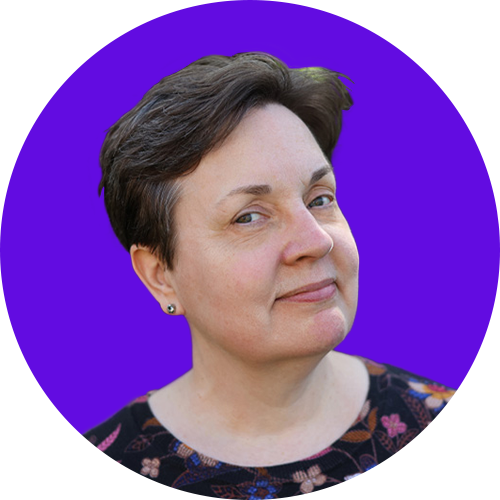News & Insights
Kelly Lambert Receives 2023 SfN Science Educator Award
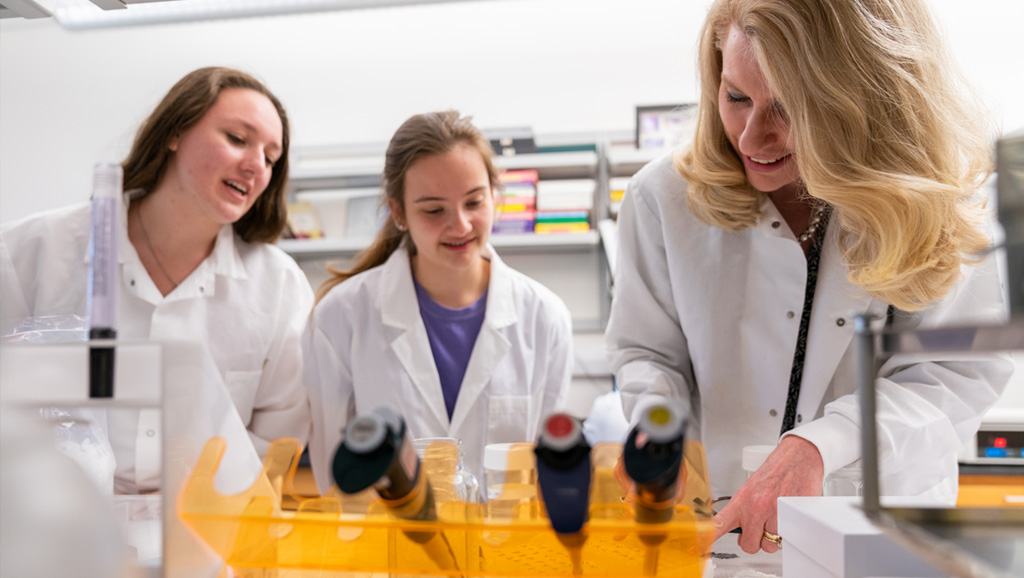
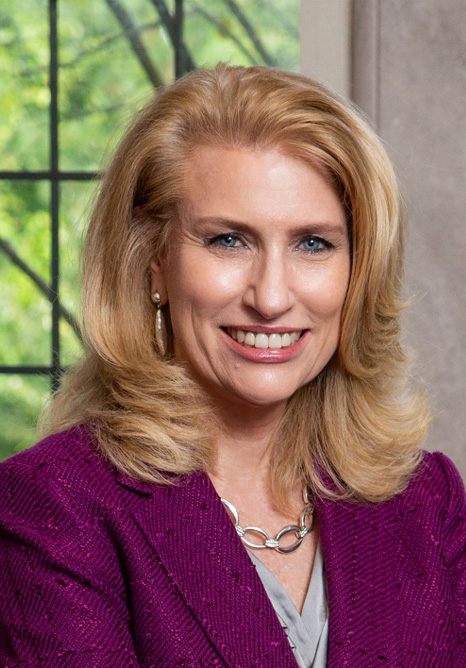

Kelly Lambert, Ph.D.
Each year, the Society for Neuroscience recognizes outstanding neuroscientists who have strongly added to public education and awareness about the field. The Dana Foundation sponsors these awards.
This year, one of two awards was presented to Kelly Lambert, Ph.D., of the University of Richmond. Lambert’s goal is to make neuroscience accessible, interesting, and fun for students of all ages—and everyone on YouTube.
Q: You reach so many different audiences—from people who want to study your formal textbooks, to those who enjoy your general-science books, video series, and your guest spots on podcasts and TV shows. Did you always intend to have a hand in so many projects?
Lambert: When I began my career as a behavioral neuroscience professor, I focused solely on teaching undergraduate students and conducting research in my small rodent laboratory. Writing a book wasn’t on my radar as a young professor, and I never dreamed the media would ever be interested in our small-scale research projects. A benefit of spending my career at primarily undergraduate institutions (PUIs), however, is that I have had a good bit of flexibility with the direction of our research projects. With my varied interests in behavioral neuroscience, fueled by the students’ fascinating ideas through the years, we have focused on a diverse array of topics—from parental behavior, to emotional resilience, to emotional resilience, to training rodents to drive. Despite the diversity of our projects, they all fall under the umbrella of experience-based neuroplasticity.
At some point, my research adventures made their way into writing projects. As a first-generation college student, I think it’s important to share neuroscience information with a wider audience than traditional college students (although I certainly value sharing information with the students!). Our emotional resilience research led to my first book Lifting Depression; our varied experiences with rodent preclinical models then led to The Lab Rat Chronicles, and the impact of environmental and experiential training led to Well-Grounded. No surprise that our recent work with wild rats, raccoons, and mouse lemurs is contributing to a new book Wild Brains. I enjoy going down rabbit holes to research these books and collect new stories and anecdotes.
I have also enjoyed working with content creators and producers in the development of two documentaries, Netflix’s The Hidden Lives of Pets and the Canadian Broadcasting Corporation’s “Rat City” episode of The Nature of Things. I especially love that children have enjoyed learning about the driving rats—hopefully attracting future neuroscientists. I hope to develop additional projects for children, perhaps extending the Kalo the Hero character I introduced during the pandemic to encourage children to wash their hands and wear a mask. My team is also interested in developing video content for platforms such as YouTube using the Learning Glass technology.
These varied outreach projects evolved as my research and teaching interests emerged. I feel fortunate to have had the opportunity to share neuroscience findings using these varied platforms.


Lambert and Temple Grandin, celebrated author and expert in autism and animal behavior, on a video call for one of Lambert’s classes.
What are the most important things you want to teach people?
Our neuroplasticity research, along with the work of many other neuroscientists, confirms that neuroplasticity is a life-long process. Thus, we are accountable for our brains throughout our lives. This is an important message: Neuroplasticity can occur at any time from the womb to the tomb! It’s never too late to tweak our neural networks. You don’t have to be a trained neuroscientist to apply this critical information—that’s why it’s critical to get the word out using as many platforms as possible.
Focusing on students, I want to model diverse research approaches. The probability of uncovering effective therapeutic strategies for psychiatric illnesses increases as researchers step outside of their expected and familiar lanes and consider innovative approaches to these challenges. In my lab, we are incorporating diverse species, habitats, and research perspectives as we search for clues about maintaining healthy and adaptive brains. The rodent brain is interesting, and we have learned a lot from the rodent models; however, there is a vast array of nervous system prototypes in nature. We have merely scratched the surface.
How has the work of reaching people where they are changed through the course of your career? What’s easier/harder now?
I think it’s wonderful that the public has more access to scientific findings through books, social media, podcasts, and engaging documentaries. I think it’s of critical importance to share science information with anyone interested—both in and out of academic institutions. The informality of podcasts has opened the door for more casual, science-based conversations, providing a considerable amount of scientific content for general consumption. Of course, with these abundant resources, one has to be careful about assessing the accuracy of information that is being dispensed across the various social media platforms.
With so many teaching platforms currently in existence, it has become a challenge to prioritize our lab’s outreach efforts in the context of my responsibilities in the lab and classroom. I’m increasingly mindful of establishing a synergy among my writing projects, outreach projects, research projects, and classroom offerings.
What is most satisfying about connecting to people in these ways? What was most surprising?
I love sharing surprising information with audiences, be they students, colleagues, or the mainstream public. When we hear an anecdote or story that surprises us, that sense of surprise is referred to as a “prediction error” and often is accompanied by a dose of dopamine that is probably both rewarding and memorable. It’s also very satisfying to connect with audiences through unique neuroscience stories. Research conducted by Uri Hasson at Princeton University that our brains become synchronized when we are all focused on the same story—an emergent experience that is pretty amazing.
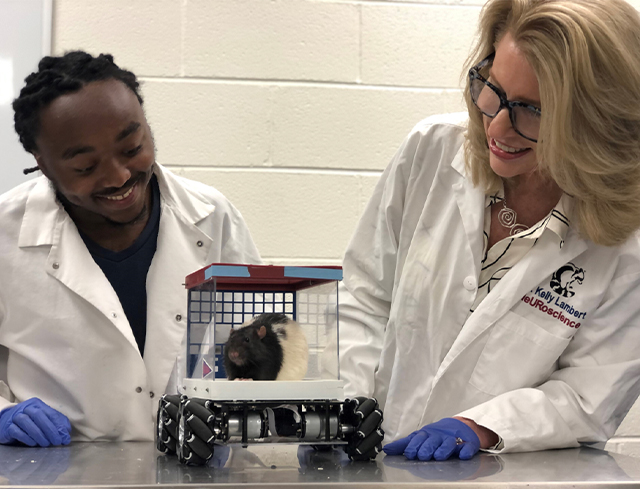

As a behavioral neuroscience professor, Lambert led research projects with her undergraduate students on an array of topics, including training rodents to drive.
Did you have a model or a mentor for this work?
Two individuals stand out as science education mentors, even though many have influenced my science outreach knowledge base through the years. When I was writing the Clinical Neuroscience textbook, I included a feature called “The Investigators” in each chapter. For the introductory chapter, I wanted to include someone who had effectively disseminated neuroscience information. I was a huge fan of Oliver Sacks and contacted him to ask if I could interview him for the book. He initially said that he was too idiosyncratic for a fundamental neuroscience textbook, but after I disagreed with him, he agreed to the interview. I had the distinct honor of visiting him in his New York City apartment. Although he is no longer with us, I continue to be amazed at the impact of his neuroscience stories.
And I continue to be a neuro-fan of Robert Sapolsky. His perfect blend of intellectual observations and strategically placed humor is so impressive—cue the prediction errors for dopamine release after reading his narrative!
What do you hope your students will accomplish?
I want students to pursue their intellectual passions in meaningful ways. Our world is changing at a quick pace, so students will no doubt need to pivot several times throughout their careers. I hope they will have lifelong motivation to keep pursuing their interests—the perfect neural algorithm for neuroplasticity.
Be sure to read our interview with 2023’s other SfN Science Educator Awardee, Christian Bravo-Rivera.
Recommended Reading

From Broadcast to Belonging: Dana's Public Engagement Evolution
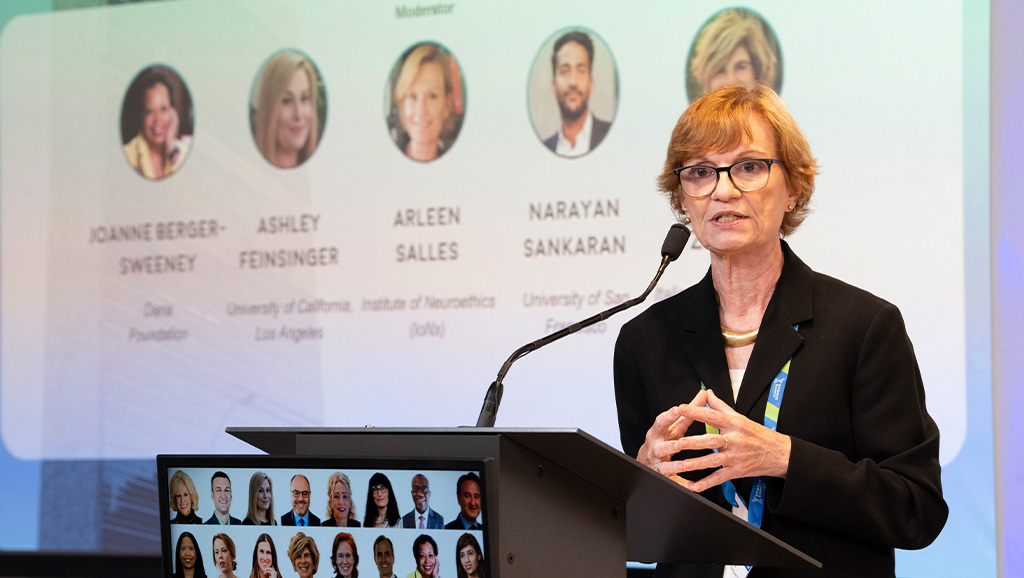
Reciprocity in Neuroscience: Dana Foundation Panel at the UN Science Summit

